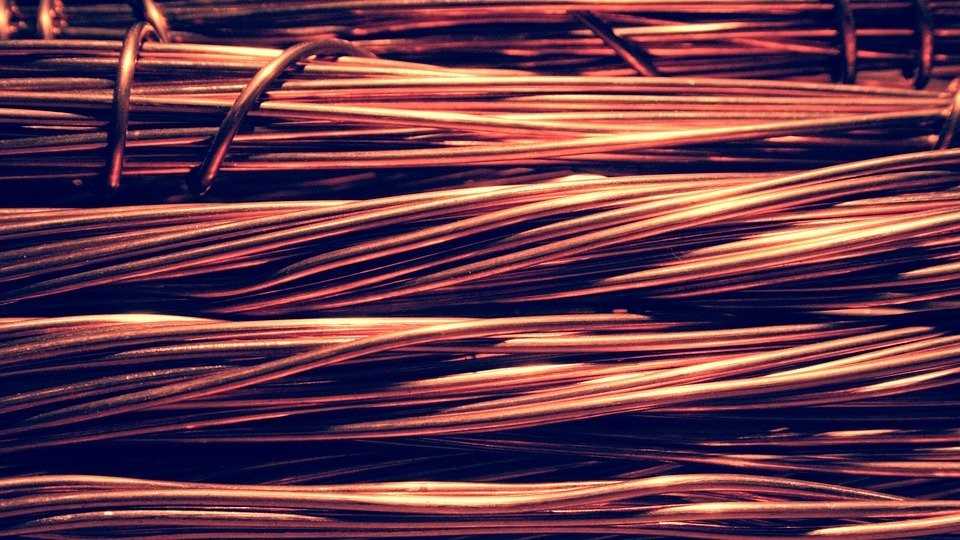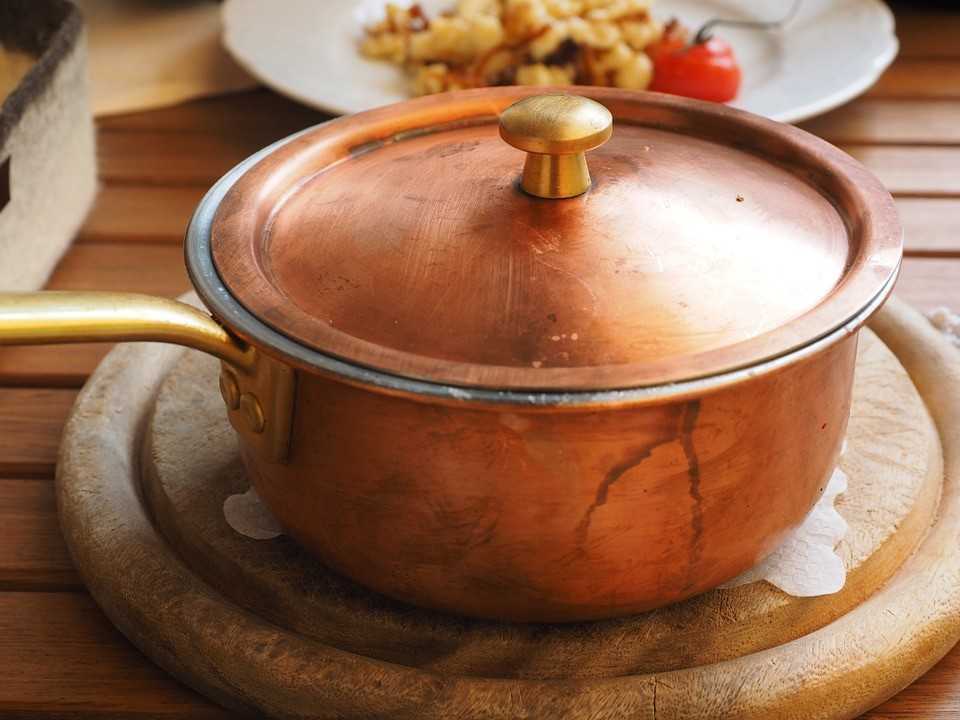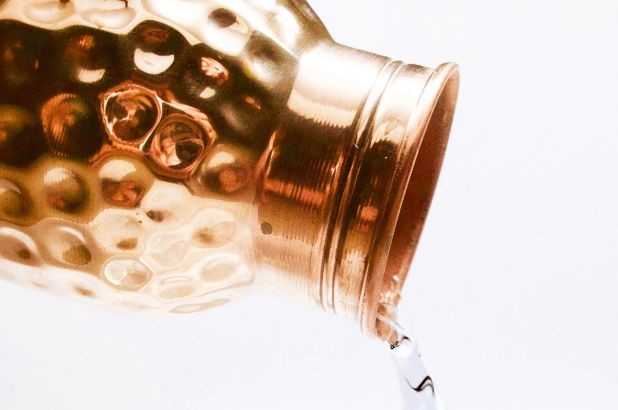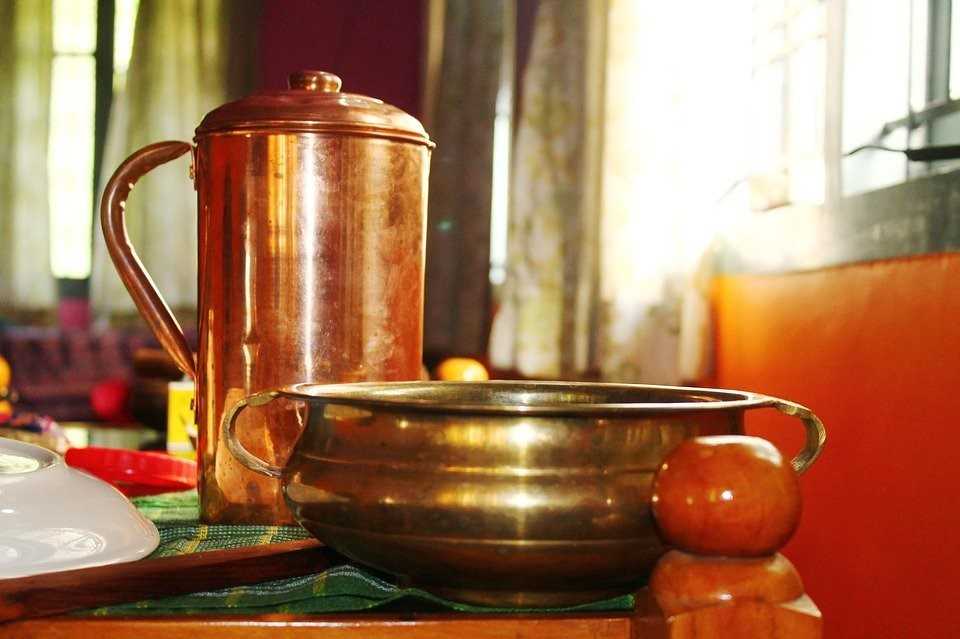Before we move on with our topic of discussion, lets understand the basics of copper as a trace mineral and its uses in the human body.
Copper, an essential trace mineral, is naturally present in some foods and is available as a dietary supplement. It is a cofactor for several enzymes (known as “cuproenzymes”) involved in energy production, iron metabolism, neuropeptide activation, connective tissue synthesis, and neurotransmitter synthesis.
Copper is also involved in many physiologic processes, such as angiogenesis; neurohormone homeostasis; and regulation of gene expression, brain development, pigmentation, and immune system functioning. In addition, defence against oxidative damage depends mainly on the copper-containing superoxide dismutase. Copper is said to play a major role in people with cardiovascular diseases and Alzheimer’s disease.

Copper levels in the body are homeostatically maintained by copper absorption from the intestine and copper release by the liver into bile to provide protection from copper deficiency and toxicity. The richest dietary copper sources include shellfish, seeds and nuts, liver & other organ meats, wheat-bran cereals, whole-grain products, and chocolate.
Copper is available in dietary supplements containing only copper, in supplements containing copper in combination with other ingredients, and in many multivitamin/multimineral products. These supplements contain many different forms of copper, including cupric oxide, cupric sulfate, copper amino acid chelates, and copper gluconate.
Copper deficiency is uncommon in humans. Based on studies in animals and humans, the effects of copper deficiency include anaemia, hypopigmentation, hypercholesterolemia, connective tissue disorders, osteoporosis and other bone defects, abnormal lipid metabolism, ataxia, and increased risk of infection.
The following groups are most likely to have inadequate copper status.
- People with Celiac Disease – suffer from copper deficiency due to intestinal malabsorption resulting from the intestinal lining alterations associated with celiac disease. People with celiac disease appear to have an increased risk of copper deficiency and that copper levels normalize within a month of adequate copper supplementation while eating a gluten-free diet.
- People with Menkes Disease – Menkes disease is a rare, genetic disorder. In these individuals, intestinal absorption of dietary copper drops sharply, leading to signs of copper deficiency, including low serum copper and CP levels. The typical manifestations of Menkes disease include failure to thrive, impaired cognitive development, aortic aneurysms, seizures, and unusually kinky hair. Most individuals with Menkes disease die by age 3 years if untreated, but subcutaneous injections of copper starting in the first few weeks after birth can reduce mortality risk and improve development.
- People Taking High Doses of Zinc Supplements – high dietary intakes of zinc can interfere with copper absorption, and excessive use of zinc supplements can lead to copper deficiency. Reductions in copper status, has been reported with even moderately high zinc intakes of approximately 60mg/day for up to 10 weeks. People who regularly consume high doses of zinc from supplements can develop copper deficiency because zinc can inhibit copper absorption.
Chronic exposure to high levels of copper can result in liver damage and gastrointestinal symptoms (e.g., abdominal pain, cramps, nausea, diarrhoea, and vomiting). Copper toxicity is rare in healthy individuals who do not have a hereditary copper homeostasis defect.
However, copper toxicity has been reported in people who consume water containing high levels of copper as a result of stagnant water in copper-containing pipes and fixtures as well as copper alloys in water distribution systems and household plumbing that allow copper to leach into water. People with Wilson’s disease, a rare, genetic disease, have a high risk of copper toxicity.

The recommended dietary allowance (RDA) for adults for copper is 900ug/day. Values for children are 340ug/day for the first 3 years, 440ug/day for ages 4 through 8, 700ug/day for ages 9 through 13 and 890ug/day for ages 14 through 18. During pregnancy and lactation, 1000ug/day and 1300ug/day are recommended, respectively. 10 mg/day is a tolerable upper intake limit for adults from foods and supplements.
In general, dietary copper intakes for adults range from 1 to 3mg/day; use of a vitamin/mineral supplement will increase exposure by about 2mg/day. Drinking-water contributes 0.1–1mg/day in most situations. Thus, daily copper intakes for adults usually range from 1 to 5mg/day.
The highest concentrations of copper under normal conditions are found in the liver, brain, heart and kidneys, with moderate concentrations found in the intestine, lung and spleen. In healthy adults, the liver contains 8–10% of the body’s total copper, while approximately 50% is found in muscle and bone due to their large tissue masses. In new-born infants, however, the liver contains 50–60% of the body’s copper. Only small amounts of copper are typically stored in the body, and the average adult has a total body content of 50–120mg copper. Copper is excreted from the body in bile, faeces, sweat, hair, menses and urine.
BENEFITS OF DRINKING COPPER WATER
Storing water in copper vessels (tamrajal) and other metal vessels like silver is a common Ayurvedic technique, for purification of water.

A study evaluated the effect of copper pot on microbially-contaminated drinking-water. The antibacterial effect of copper pot against important diarrhoeagenic bacteria, including Vibrio cholerae, Shigella flexneri, enterotoxigenic Escherichia coli, enteropathogenic E. coli, Salmonella enterica Typhi, and Salmonella Paratyphi is reported.
When drinking-water was contaminated with 500CFU/mL of the above bacteria and stored in copper pots for 16 hours at room temperature, no bacteria could be recovered on the culture medium. After 16 hours, there was a slight increase in the pH of water from 7.83 to 7.93 in the copper pots while the other physicochemical parameters remained unchanged. Copper content (177±16 ppb) in water stored in copper pots was found to be well within the permissible limits of the World Health Organization.
Therefore, for the rural populations who cannot afford the modern methods of purification, can effectively use copper utensils for storing water. Its functioning is not dependent on fuel, electricity, replaceable filters, intensity of sunlight, etc. to operate or maintain it; it is simply a passive storage of water. the scientists also determined that the copper content of the water was less than 0.2 ppm (parts per million), which represents an amount far less than the permissible limit set by the World Health Organization (WHO).
As the study states, “safety of leached copper does not appear to be an issue since studies have shown that the current WHO guideline of 2mg Cu/L is safe” and the levels absorbed in the study were well within permissible limits.
Acc. to a study, stored water inoculated with 500—1000 colony forming units/ml of E. coli, Salmonella Typhi and Vibrio cholerae overnight at room temperature in copper pots or in glass bottles containing a copper coil. Researchers found that the organisms were no longer recoverable when cultured on conventional media, by contrast with water stored in control glass bottles under similar conditions.
The amount of copper leached into the water after overnight storage in a copper pot or a glass bottle with a copper device was less than 475 parts per billion, which is well within the safety limits prescribed by the WHO.
A study, explored the antibacterial effect of copper vessel stored with drinking water inoculated with diarrhoea-causing bacterial strains enterotoxigenic Escherichia coli (ETEC), Vibrio cholera and Shigella flexneri. About 500 Colony Forming Unit (CFU/mL) of the bacterial strains of E. coli, V. cholera and S. flexneri were inoculated separately in drinking water stored in the copper vessel and non- copper vessel for 12 hrs.
Researchers found that, the bacterial strains E. coli, V. cholera and S. flexneri in copper vessel observed no growth on the selective media and when the bacterial strains inoculated in the non-copper vessel observed growth upon inoculated in selective media E. coli, V. cholera and S. flexneri. The antibacterial activity may be due to the oligodynamic effect of copper which destroy the cell wall and cell membrane results in membrane damage.
Another study, evaluated the effect of storage of water samples in copper and brass vessels, against the indicator microorganism, E. coli. The drinking water samples collected from different sources were stored in copper and brass vessels for 24-48hrs.
It was observed that the amount of E. coli in the copper vessels dropped dramatically over time, and fell to undetectable levels in 18-24hrs & storing water samples in brass vessels killed the indicator E. coli, within 30-36hrs, thus making water safe for consumption from microbiological perceptive.

A study, assessed the influence of Tamrajal and copper nanoparticles on the morphological alterations of the Candida and its biofilm forming ability, but also on their ability to destroy preformed biofilms.
(Biofilms are a collective of one or more types of microorganisms that can grow on many different surfaces. Microorganisms that form biofilms include bacteria, fungi and protists. One common example of a biofilm dental plaque, a slimy build-up of bacteria that forms on the surfaces of teeth.)
In tamrajal, copper gently leaches into the water from the contact surface of the vessel and lends it all its positive properties. As copper dissolves in water, it becomes ionic (electrolyte) as can be ascertained by its pH measurement. Oligodynamic effect of this water, thus helps in killing microorganisms.
Researchers found that, 92-100% cytotoxicity to the Candida species was observed with copper oxide nanoparticles as well as tamrajal during 24hr time. The study also confirmed complete germ tube inhibition by copper in both its forms in addition to the reduction in the biofilm production.
In Ayurveda, procedures of Jalshodhana (purification of water) are boiling, sun exposure, quenching the hot earthen ball in water, sieving, use of Katak, Sphatika, pearl, gems etc. Metals such as copper, silver and gold are used for making utensils to keep drinking water; they are also used traditionally in India. Use of Tamra Patra for storage of drinking water is not only recommended in different Ayurvedic treaties but also practiced for generations.
Many studies have demonstrated that the copper not only changes the physical chemical properties of water but also inactivates bacteria.
CONCLUSION
Overhyping & overstating the benefits of any particular product is a simple way to boost sales. But for me, I have given you clear benefits of copper as a trace mineral in the body, its side effects if taken in excess, the daily intake and max toxicity limits, and the real research done on the water stored in copper vessels.

If we really see the benefits, tamrajal or copper water has been used in Ayurveda since centuries. But the real use of tamra jal was for water purification and it has been clearly proven that, water stored in copper vessels lead to destruction of various bacteria species along with other harmful microbes.
Also, the common doubt that copper water would lead excess leeching of copper in water and can be toxic, has been proven false as water stored in copper vessels even for days, have shown the amount of copper ions to be well within limits of the a healthy intake, and far from the toxic limits.
But, we also saw that despite of various health benefits which copper has in our body, copper deficiency is extremely rare. And just like any other trace mineral, excess can be toxic.
Therefore, most websites claiming tons of benefits of copper water, are just telling you the benefits of copper as a trace mineral. And because copper deficiency is so rare, having extra copper won’t do any benefits to you as such. Also, you are getting adequate copper from various food sources in your daily life, like seeds and nuts, liver & other organ meats, whole-grain products, and chocolate etc.
Therefore, tamrajal can be a healthy and safe addition to your household. You can invest in copper bottle for personal use or a larger vessel for the family. Do not use any juices, tea or coffee, or any other acidic liquids in the vessel, as acid reacts with copper.
But remember, most part of the human population has no such intake of copper water, and a lot of communities are much healthier and longer living communities than Indian communities without addition of any such thing. None of these things have any link to human longevity. They have general health benefits, which may or may not be helpful for some people.



